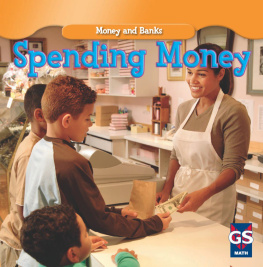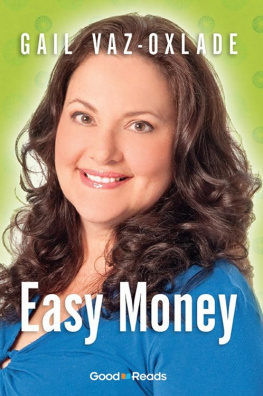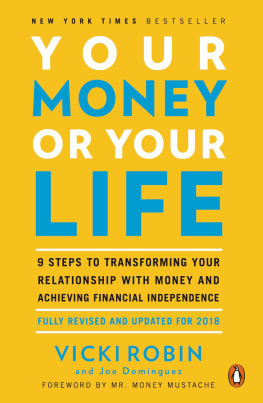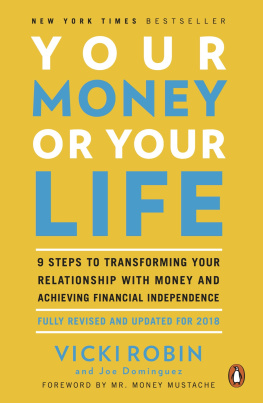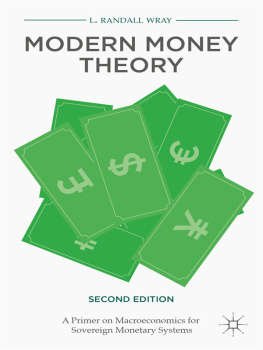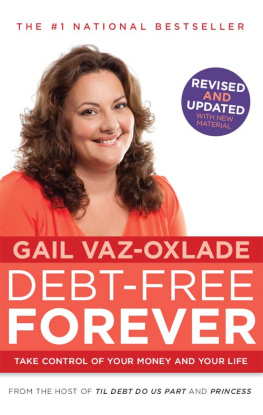CONTENTS
List of Illustrations
- Chapter 4
Guide
Pages
Making Money Work for Us
How MMT Can Save America
L. Randall Wray
polity
Copyright L. Randall Wray 2022
The right of L. Randall Wray to be identified as Author of this Work has been asserted in accordance with the UK Copyright, Designs and Patents Act 1988.
First published in 2022 by Polity Press
Polity Press
65 Bridge Street
Cambridge CB2 1UR, UK
Polity Press
111 River Street
Hoboken, NJ 07030, USA
All rights reserved. Except for the quotation of short passages for the purpose of criticism and review, no part of this publication may be reproduced, stored in a retrieval system or transmitted, in any form or by any means, electronic, mechanical, photocopying, recording or otherwise, without the prior permission of the publisher.
ISBN-13: 978-1-5095-5427-0
A catalogue record for this book is available from the British Library.
Library of Congress Control Number: 2022933265
The publisher has used its best endeavors to ensure that the URLs for external websites referred to in this book are correct and active at the time of going to press. However, the publisher has no responsibility for the websites and can make no guarantee that a site will remain live or that the content is or will remain appropriate.
Every effort has been made to trace all copyright holders, but if any have been overlooked the publisher will be pleased to include any necessary credits in any subsequent reprint or edition.
For further information on Polity, visit our website:
politybooks.com
Acknowledgments
I would like to thank Dimitri Papadimitriou and the Levy Economics Institute for support over the past three decades; my current colleagues at Bard College, especially Pavlina Tcherneva; my former colleagues and students at the University of MissouriKansas City, including Mat Forstater, Stephanie Kelton, Jim Sturgeon, Bill Black, Yeva Nersisyan, and Eric Tymoigne; my wife, Xinhua, and kids Shane, Alina, and Allison; and finally my comrades in arms, Bill Mitchell and Warren Mosler. Above all, I want to recognize my indebtedness to my mentor for forty years, the late John Henry, and to Hyman Minsky, the greatest American economist of the second half of the twentieth century on whose shoulders I stand.
Preface
I studied with Hyman Minsky in the early 1980s when he was writing his famous 1986 book (Stabilizing an Unstable Economy). There are two phrases in that book that I remember him saying in class:
Everyone can create money; the problem is to get it accepted.
The need to pay taxes means that people work and produce in order to get that in which taxes can be paid.
The first of these has to do with the creation of money by anyone while the second concerns why anyone would want it.
Most of my work on money for the first decade after my PhD studies concerned the first statement. It is largely about the private money system; government enters primarily as a regulator of banks and through its central bank as the provider of bank reserves. We can call that the credit money system how private money is created when banks make loans. My first book, Money and Credit in Capitalist Economies (1990).
However, I never forgot the other point he made: we work hard to get the governments money because we have to pay taxes. That had led me to the J. M. Keynes of the Treatise on Money when I was writing my PhD dissertation in Bologna, Italy, in 1986.
I included a section on chartalism or the state money approach in the 1990 book, but it was brief since I was focusing on the role of credit money in the private sector. However, in the mid-1990s I returned to the role of the state in our monetary system, and discovered what I believe to be the best two articles ever written on money, by A. Mitchell Innes in 1913 and 1914. Keynes had reviewed the first one and aside from some quibbles he declared it to be correct. Unfortunately, these articles were largely forgotten until I republished them in my 2004 book, Credit and State Theories of Money.
What struck me is that Innes was able to integrate a state money approach and a credit money approach. To understand our money, what Keynes called modern money, you must have both. Otherwise, to borrow a metaphor, youve got Hamlet without the Prince.
A group of us first at the Levy Institute in New York and then at the University of MissouriKansas City (but also including others, especially Warren Mosler, Bill Mitchell, and Charles Goodhart) dug deeper into this and gradually developed what is now called Modern Money Theory (MMT). My 1998 book, Understanding Modern Money,
MMT has been in the news constantly since 2019 at first derided as dangerous crazy talk, and then embraced as governments ramped up spending to deal with the global COVID-19 pandemic.
Many think we claim to have invented some stand-alone, entirely new, approach to money. That is false. We stand on the shoulders of giants (the third phrase I recall from Minsky) there is really no completely new theory in Modern Money Theory; MMT is an integration, one that integrates those two phrases from Minsky. We argue that this integration provides a new framework for analyzing monetary and fiscal policy in what we call sovereign currency nations. That framework is developed in detail in our MMT-based textbook, Macroeconomics.
Over the past twenty-five years we have investigated all the details important to answering the question: How does the sovereign government really spend? While Im sure there were economists in both the Federal Reserve Bank (Fed) and the US Treasury who understood all the operational details, these were not understood in academia or policy circles.
They mostly still are not.
But MMT has taken off; indeed, it has taken on a life of its own in the blogosphere. It is loved by many and perhaps hated by more. This current book is positioned in between the primer and an academic text, for those who already know the basics of MMT but who want to dig a bit deeper.
One of my graduate students in my class on money, who happened to be much older than the others, had to make a presentation at the end of the semester. He brought in a bag of those funny glasses that distort your vision. He asked everyone to don a pair and then began his talk. He discussed how the world had looked to him before he started the class on money it looked just like the world looked to us now, with those funny glasses on: distorted. We looked at a fuzzy and barely comprehensible world with our impaired vision. He then proclaimed that we should take them off and look at the world anew! As we did, he told us wed never see the world in the same way again and that is precisely the way he felt after discovering Modern Money Theory. All those old cobwebs that had distorted his vision had been cleared away and he was ready to see the monetary world as it actually exists.
Your results may be similar.
Notes
- Hyman P. Minsky, Stabilizing an Unstable Economy, Yale University Press, New Haven and London, 1986, pp. 228 and 231.
- L. Randall Wray, Money and Credit in Capitalist Economies: The Endogenous Money Approach, Edward Elgar, Aldershot, 1990.
- L. Randall Wray, Why Minsky Matters: An Introduction to the Work of a Maverick Economist, Princeton University Press, Princeton and Oxford, 2015.
- John Maynard Keynes, A Treatise on Money, Volumes I and II, Harcourt, Brace, New York, 1930.
- Georg Friedrich Knapp, The State Theory of Money, Clifton, NY, Augustus M. Kelly, 1924 (1973).





